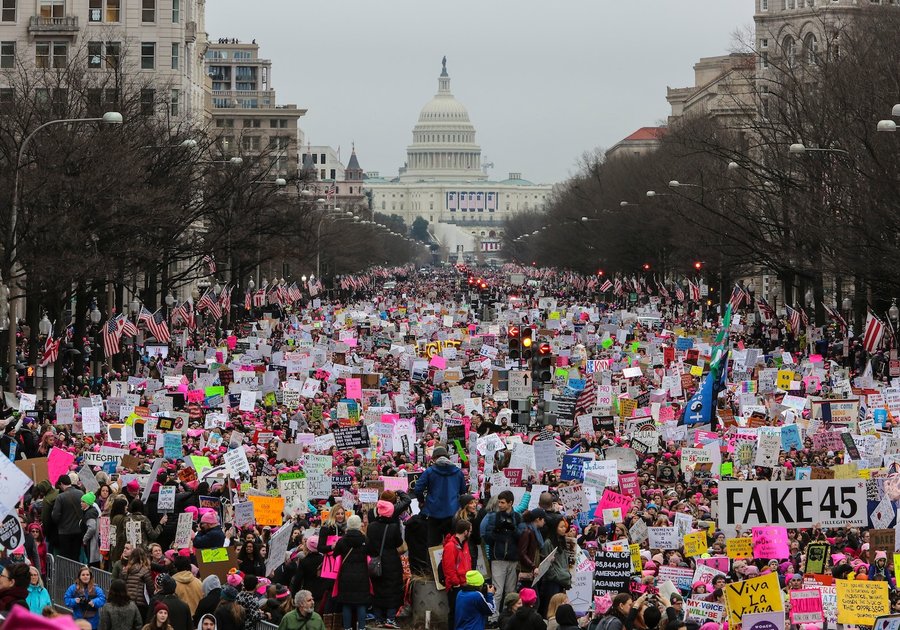Every day, women are making more and more progress toward equality. Although there is some controversy, many classify the present as the fourth wave of feminism, starting in the early 2010s. Over the past years, there has been a focus on sexual harassment, body positivity, and intersectionality. Many believe this to be an extension of the third wave due to their similar focuses. However, a key difference is the use of social media in activism. Social media gave women a new platform to speak on and allowed them to reach a wide variety of audiences, making it a major aspect of feminism today.
With the rise in social media, many movements have been further spread throughout women. A few examples of these movements are the:
- #MeToo Movement: The term “Me Too” was coined by Tarana Burke to raise awareness of sexual violence against women. While this was started in 2006, the campaign continued to present times when Alyssa Milano amplified this message by encouraging women to share their stories of sexual violence and harassment in 2017. Through the extension of the movement, misogynistic and patriarchal attitudes have been institutionalized in our culture.
- #TIMESUP Movement: This was created by over 300 Hollywood celebrities to bring attention to the imbalance of power in professional settings. They advocated for equal pay and work opportunities, especially for women of color, which promoted safety, fairness, and equity in the workplace. In addition, they set up the Time’s Up Legal Defense Fund, which has raised over $21 billion to fight discrimination in the workplace.
- Women’s March: After former president Trump’s inauguration, several protests were held around the world in response to the many anti-women statements made before and throughout his campaign. Over 7 million people gathered to advocate for things such as reproductive rights, LGBTQ rights, gender inequalities, racial inequalities, workers’ rights, and a variety of other issues.
Another issue being tackled during the fourth wave of feminism has been body shaming. Throughout history, society has placed beauty standards for women that are often unrealistic and unachievable. As a result, women become dissatisfied with their body, which can lead to poor self-esteem and mental health issues. Women have been empowering others to embrace their body, regardless of their shape and size. In addition, different bodies are receiving more representation in the media. Combined, the old beauty standards are slowly being eliminated, allowing women to feel more comfortable and confident in their bodies.
Intersectionality has been another focus in the fourth wave. It describes the way in which different oppressions connect with one another. For example, a colored, homosexual female will have a different experience than that of a white, heterosexual male. In this scenario, the female is faced with many overlapping factors that will bring her more struggles than others. Overall, recognizing intersectionality is a way to acknowledge how issues, including class, race, age, ability, sexuality, and gender combine to affect women's experience of discrimination to help give a voice to those who are marginalized.
The fourth wave of feminism has allowed women to expand on issues brought about in the third wave. Through social media, they have been given a new platform to advocate for themselves and share their experiences. This has allowed women from all over to connect and be shown that they are not alone in this fight for equality.
As it has been shown throughout this month, women have come a long way since the Seneca Falls Convention. Throughout history, there have been many powerful women and movements that have gotten women to where they are now. However, women are constantly still fighting to fully achieve equal rights. Nearly 60% of adults in the United States believe the US still has a significant amount of work for women to gain equality. They believe there is still more work to be done, which is why the fourth wave of feminism continues, allowing more women to be empowered and advocated for every day.
Sources:
https://www.britannica.com/topic/feminism/The-fourth-wave-of-feminism
https://digitalcommons.tacoma.uw.edu/cgi/viewcontent.cgi?article=1086&context=gender_studies
https://www.vox.com/2018/3/20/16955588/feminism-waves-explained-first-second-third-fourth
https://www.theguardian.com/world/2013/dec/10/fourth-wave-feminism-rebel-women
https://www.history.com/news/feminism-four-waves
https://www.forbes.com/sites/jenniferpalumbo/2022/05/12/how-the-body-positive-movement-doesnt-encourage-obesity-but-inclusion/?sh=24442b251737
https://time.com/5560575/intersectionality-theory/
https://www.pewresearch.org/social-trends/2020/07/07/a-century-after-women-gained-the-right-to-vote-majority-of-americans-see-work-to-do-on-gender-equality/



